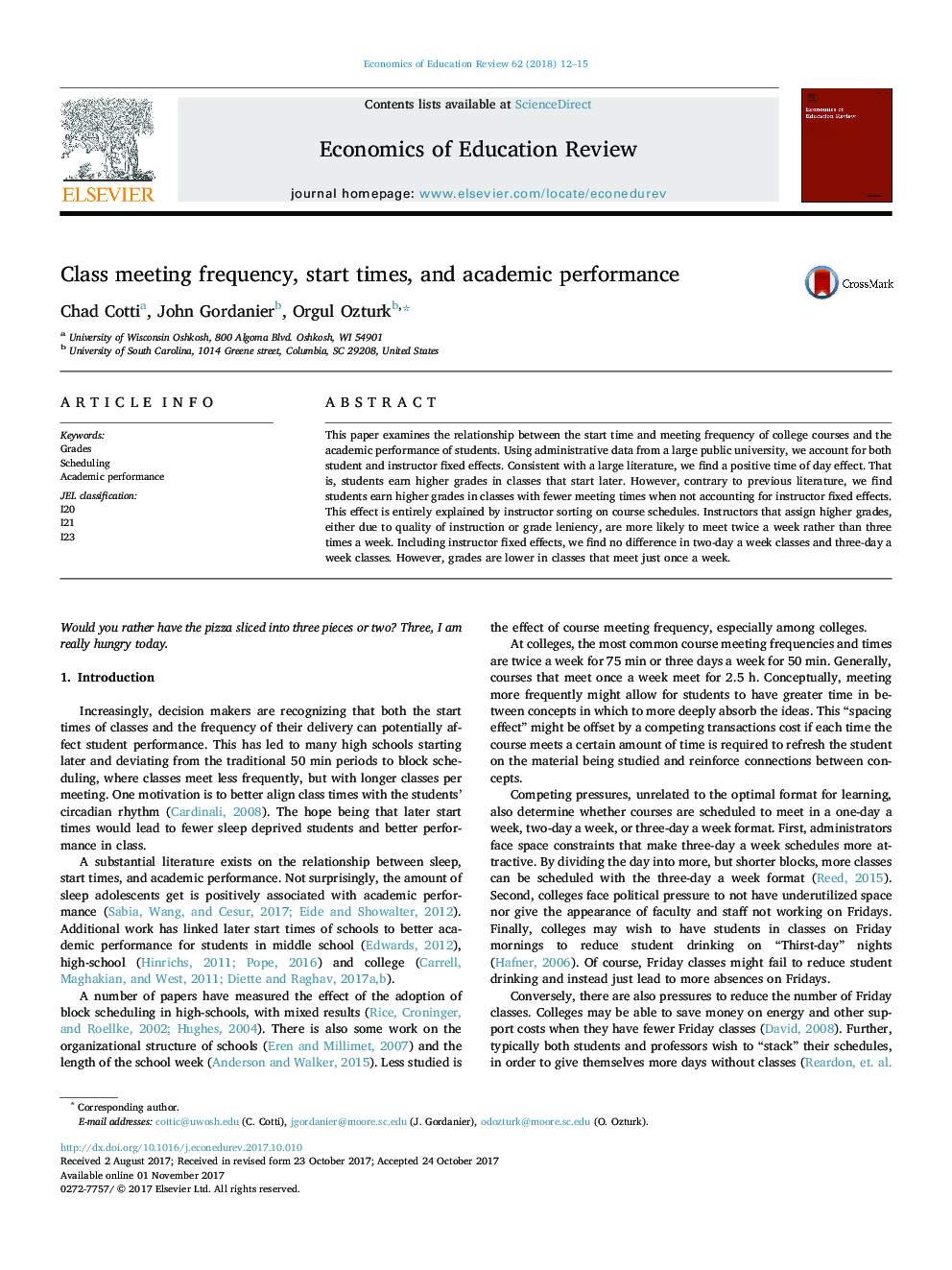| Article ID | Journal | Published Year | Pages | File Type |
|---|---|---|---|---|
| 6840804 | Economics of Education Review | 2018 | 4 Pages |
Abstract
This paper examines the relationship between the start time and meeting frequency of college courses and the academic performance of students. Using administrative data from a large public university, we account for both student and instructor fixed effects. Consistent with a large literature, we find a positive time of day effect. That is, students earn higher grades in classes that start later. However, contrary to previous literature, we find students earn higher grades in classes with fewer meeting times when not accounting for instructor fixed effects. This effect is entirely explained by instructor sorting on course schedules. Instructors that assign higher grades, either due to quality of instruction or grade leniency, are more likely to meet twice a week rather than three times a week. Including instructor fixed effects, we find no difference in two-day a week classes and three-day a week classes. However, grades are lower in classes that meet just once a week.
Related Topics
Social Sciences and Humanities
Economics, Econometrics and Finance
Economics and Econometrics
Authors
Chad Cotti, John Gordanier, Orgul Ozturk,
